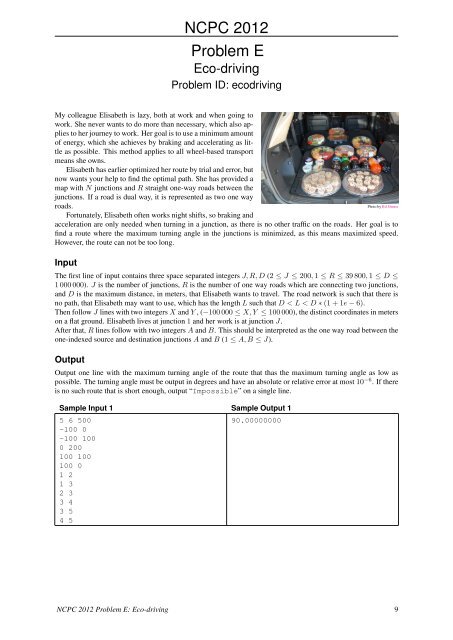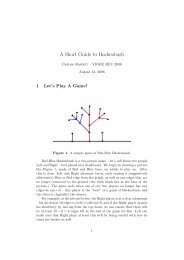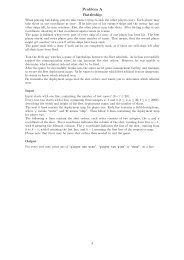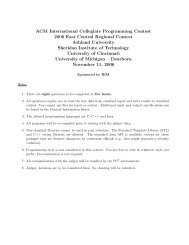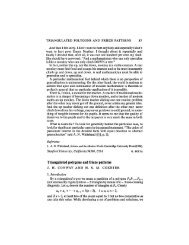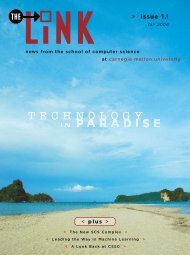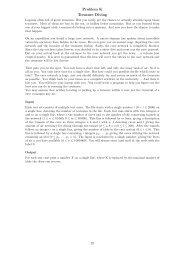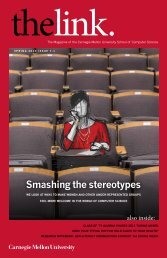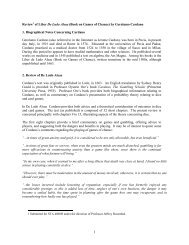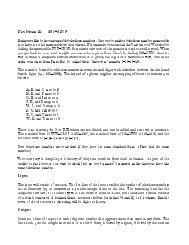Problem A - Nordic Collegiate Programming Contest
Problem A - Nordic Collegiate Programming Contest
Problem A - Nordic Collegiate Programming Contest
Create successful ePaper yourself
Turn your PDF publications into a flip-book with our unique Google optimized e-Paper software.
NCPC 2012<br />
<strong>Problem</strong> E<br />
Eco-driving<br />
<strong>Problem</strong> ID: ecodriving<br />
My colleague Elisabeth is lazy, both at work and when going to<br />
work. She never wants to do more than necessary, which also applies<br />
to her journey to work. Her goal is to use a minimum amount<br />
of energy, which she achieves by braking and accelerating as little<br />
as possible. This method applies to all wheel-based transport<br />
means she owns.<br />
Elisabeth has earlier optimized her route by trial and error, but<br />
now wants your help to find the optimal path. She has provided a<br />
map with N junctions and R straight one-way roads between the<br />
junctions. If a road is dual way, it is represented as two one way<br />
roads.<br />
Photo by Bil Simser<br />
Fortunately, Elisabeth often works night shifts, so braking and<br />
acceleration are only needed when turning in a junction, as there is no other traffic on the roads. Her goal is to<br />
find a route where the maximum turning angle in the junctions is minimized, as this means maximized speed.<br />
However, the route can not be too long.<br />
Input<br />
The first line of input contains three space separated integers J, R, D (2 ≤ J ≤ 200, 1 ≤ R ≤ 39 800, 1 ≤ D ≤<br />
1 000 000). J is the number of junctions, R is the number of one way roads which are connecting two junctions,<br />
and D is the maximum distance, in meters, that Elisabeth wants to travel. The road network is such that there is<br />
no path, that Elisabeth may want to use, which has the length L such that D < L < D ∗ (1 + 1e − 6).<br />
Then follow J lines with two integers X and Y , (−100 000 ≤ X, Y ≤ 100 000), the distinct coordinates in meters<br />
on a flat ground. Elisabeth lives at junction 1 and her work is at junction J.<br />
After that, R lines follow with two integers A and B. This should be interpreted as the one way road between the<br />
one-indexed source and destination junctions A and B (1 ≤ A, B ≤ J).<br />
Output<br />
Output one line with the maximum turning angle of the route that thas the maximum turning angle as low as<br />
possible. The turning angle must be output in degrees and have an absolute or relative error at most 10 −6 . If there<br />
is no such route that is short enough, output “Impossible” on a single line.<br />
Sample Input 1 Sample Output 1<br />
5 6 500<br />
-100 0<br />
-100 100<br />
0 200<br />
100 100<br />
100 0<br />
1 2<br />
1 3<br />
2 3<br />
3 4<br />
3 5<br />
4 5<br />
90.00000000<br />
NCPC 2012 <strong>Problem</strong> E: Eco-driving 9


